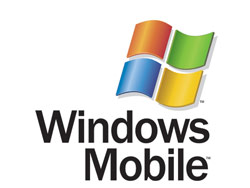One of the cool new features that Windows Mobile 6.5 will bring to the table once it will be released by Microsoft is gesture support. Thanks to gesture support you will be able to interact with your Windows Mobile 6.5-powered smartphone in a more natural way and establish more of an emotional connection with the device or the app under your finger or stylus. All you have to do is touch the screen in a certain manner and it will perform a specific task.
“Technically gestures are a collection of input points generated by touching the screen in patterns that the system recognizes. However the touch solution is much more than just the gestures, it’s also about the animation and interaction that take place as a result of the gesture input, for example smoothly scrolling a list of items or ensuring a UI item remains fixed to the ‘finger’ to give the illusion that the user is directly manipulating the screen content as if it were tangible,” comments Microsoft Evangelist Marcus Perryman.
The following gestures are supported in Windows 6.5
Select – tap the screen briefly; tap is the equivalent of left clicking the mouse button.
Double Select – tap the screen two times; double select is the equivalent of double left click.
Hold – tap the screen for a longer period of time for a context menu to be brought up; hold is the equivalent of right clicking the mouse button.
Pan – touch movement is represented as a pan gesture when a certain movement distance is exceeded. Content moves as your finger moves. This is similar to when you select a window with your mouse cursor and move it around.
Scroll – move the window up and down. When you move your finger swiftly on the screen (a flick), content continues to move in the direction of the last pan and at the same velocity, coming to a halt in time.
“Using a stylus or a mouse results in surprisingly accurate touch data which in turn makes small screen controls a viable user experience. In this situation tolerances for click, double click and tap’n’hold can be very small. However when using a finger instead of a stylus several things have to change – for example the tolerances for click , double click, and tap’n’hold need to grow significantly to handle the huge variety of finger shapes and sizes found out in the wilds of human kind. Additionally when moving your finger across the screen the shape pressed against the screen changes due to the angle the finger is at. This often leads to unexpected input points at the end of a pan input that can cause misinterpretation of the movement,” added Perryman.
“Technically gestures are a collection of input points generated by touching the screen in patterns that the system recognizes. However the touch solution is much more than just the gestures, it’s also about the animation and interaction that take place as a result of the gesture input, for example smoothly scrolling a list of items or ensuring a UI item remains fixed to the ‘finger’ to give the illusion that the user is directly manipulating the screen content as if it were tangible,” comments Microsoft Evangelist Marcus Perryman.
The following gestures are supported in Windows 6.5
Select – tap the screen briefly; tap is the equivalent of left clicking the mouse button.
Double Select – tap the screen two times; double select is the equivalent of double left click.
Hold – tap the screen for a longer period of time for a context menu to be brought up; hold is the equivalent of right clicking the mouse button.
Pan – touch movement is represented as a pan gesture when a certain movement distance is exceeded. Content moves as your finger moves. This is similar to when you select a window with your mouse cursor and move it around.
Scroll – move the window up and down. When you move your finger swiftly on the screen (a flick), content continues to move in the direction of the last pan and at the same velocity, coming to a halt in time.
“Using a stylus or a mouse results in surprisingly accurate touch data which in turn makes small screen controls a viable user experience. In this situation tolerances for click, double click and tap’n’hold can be very small. However when using a finger instead of a stylus several things have to change – for example the tolerances for click , double click, and tap’n’hold need to grow significantly to handle the huge variety of finger shapes and sizes found out in the wilds of human kind. Additionally when moving your finger across the screen the shape pressed against the screen changes due to the angle the finger is at. This often leads to unexpected input points at the end of a pan input that can cause misinterpretation of the movement,” added Perryman.

























